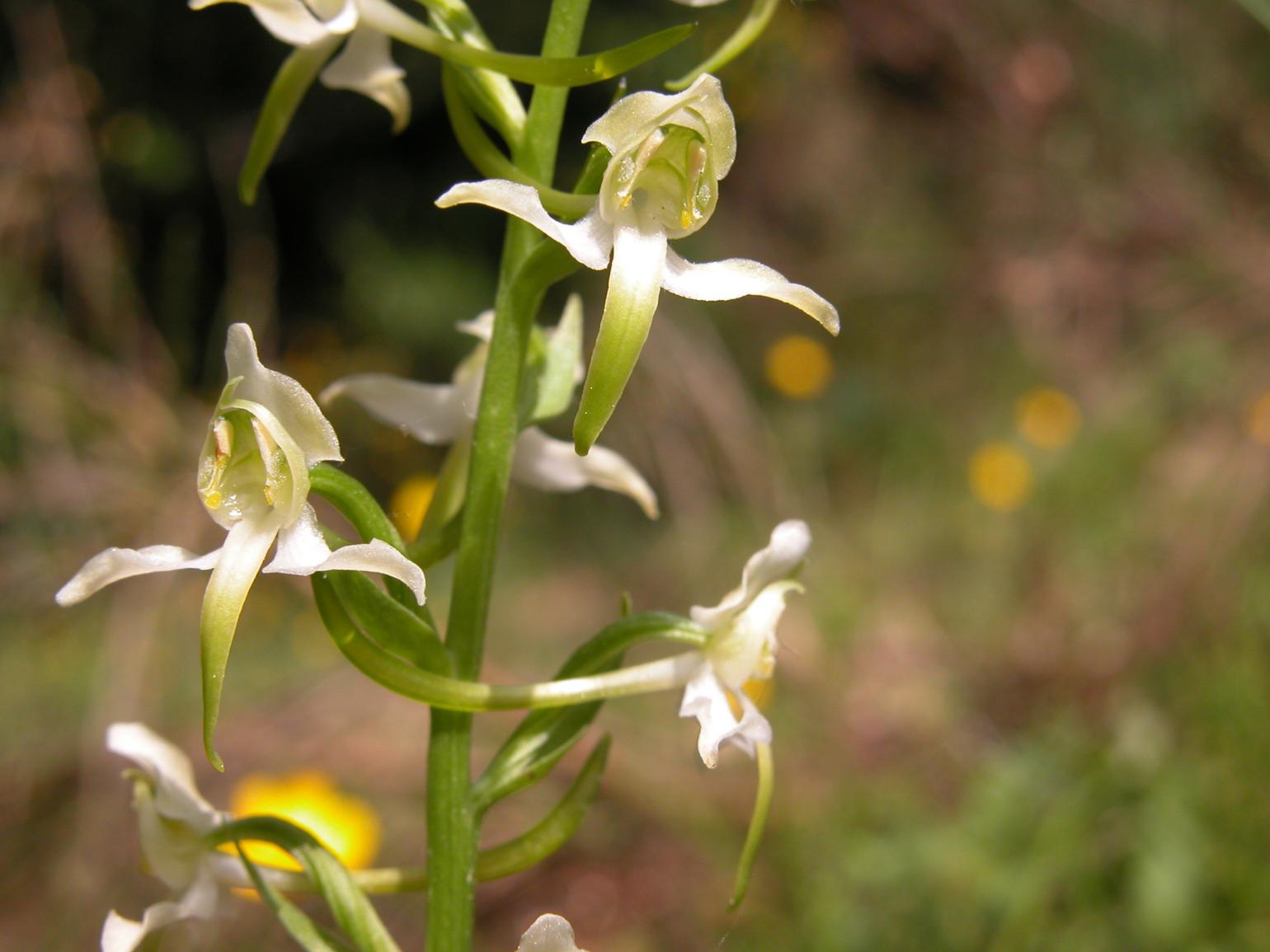 (modifié de Coste, Flore de la France 1937) :
(modifié de Coste, Flore de la France 1937) :
Plante plus robuste de 30-60 cm, munie à la base de 2-3 feuilles
Écologie : (répartition d'après la flore) Bois, landes, pâturages, dans toute la France.
Répartition hors de France : Europe ; Caucase, Sibérie ; Afrique septentrionale.
 (modified from Butcher, British Flora 1961):
(modified from Butcher, British Flora 1961):
NOTE: the French text is more complete and up-to-date
A rather stout perennial with the stem 15-45 cm tall, growing from two ellipsoid tubers. Stem with two broadly ovate, acute, entire, sheathing leaves at its base; stem leaves few, small, linear, acute
Ecology UK: (distribution according to flora) It is a rather common plant in woods and on grassy slopes on basic soils throughout the British Isles.[in decline, preference for southerly areas; tendency to reappear after many years if canopy re-opens] .
France:
Distribution outside France: ?
Fleurs : plus grandes d'un blanc verdâtre, inodores ou peu odorantes, en épi lâche ; bractées plus larges ; divisions latérales extérieures du périanthe oblongues ; labelle lancéolé obtus (3 mm de large) ; éperon filiforme en massue ; anthère large, à loges écartées, divergentes à la base en fer à cheval ; fossette stigmatique à bord étroit.
Flowers: about 12-15 mm diam., fragrant, in a wide, rather long, lax raceme, subtended by linear bracts longer than the ovary; outer perianth segments greenish-white, lanceolate, acute, spreading, inner smaller, connivent with the upper outer one to form the hood; lip somewhat longer than the outer lobes, narrowly oblong, apex rounded; spur rather stout, acute, nearly twice as long as ovary. Anther cells converging towards the apex of the hood, basal glands laterally placed and about 10 mm apart; stigma broad, pointed;
Flowering UK: Mid May-mid July.

 Orchid, Greater Butterfly
Orchid, Greater Butterfly
 Platanthère (f.) verdâtre
Platanthère (f.) verdâtre









 Please
consider
Please
consider 











